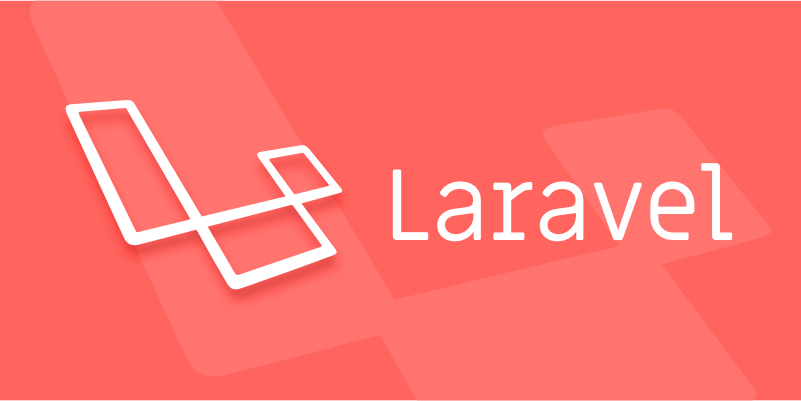Laravel Scout is a driver-based package that simplifies full-text search implementation in Laravel apps by syncing Eloquent models with search engines. 1. It eliminates slow LIKE queries by integrating with powerful tools like Algolia, Meilisearch, or database full-text search. 2. Key features include automatic indexing via queued jobs, a simple search syntax using the Searchable trait, and support for multiple drivers. 3. To use Scout, install via Composer, publish the config, add the Searchable trait to your model, define toSearchableArray() to specify indexed data, import existing records with php artisan scout:import, and perform searches with Post::search('query')->get(). 4. Driver choices include Meilisearch (recommended for self-hosted, feature-rich search), Algolia (scalable, paid), Database (basic, no extra services), and TNTSearch (community, SQLite-friendly). 5. Best practices include using queues for performance, customizing indexing logic, and leveraging advanced features like filtering or faceting where supported. In short, Laravel Scout acts as a bridge between Eloquent models and search engines, enabling efficient, relevant full-text search with minimal code, where you define searchable data, Scout keeps it synced, and search is performed in one line, resulting in a seamless and scalable search experience.

Laravel Scout is a Laravel package that provides a simple, driver-based solution for adding full-text search capabilities to your Eloquent models. Instead of writing complex database queries or managing raw SQL full-text indexes, Scout automatically keeps a search index in sync with your model data and lets you perform fast, relevant text searches using popular search engines like Algolia, Meilisearch, or even database-backed solutions.

Why Use Laravel Scout?
When your app grows, basic LIKE queries in MySQL or PostgreSQL become slow and lack features like relevance scoring, typo tolerance, or faceted search. Laravel Scout solves this by offloading search logic to dedicated tools, while keeping the API easy to use within Laravel.
Scout doesn’t do the searching itself — it’s a wrapper that syncs your data and provides a clean interface to powerful search services.

Key Features of Laravel Scout
- Automatic indexing: When you create, update, or delete Eloquent models, Scout keeps the search index updated (via queued jobs).
-
Simple search syntax: Just call
Searchableon your model and use::search('query'). -
Support for multiple drivers:
- Algolia (officially supported, great for production)
- Meilisearch (open-source, self-hostable, fast)
- Database engine (basic full-text search using MySQL/PostgreSQL — good for small apps or testing)
- Community drivers (e.g., TNTSearch for SQLite support)
How to Use Laravel Scout (Basic Example)
-
Install Scout via Composer:
composer require laravel/scout
Publish and run the config:

php artisan vendor:publish --provider="Laravel\Scout\ScoutServiceProvider"
Add the
Searchabletrait to your model:use Laravel\Scout\Searchable; class Post extends Model { use Searchable; // Define what data should be indexed public function toSearchableArray() { return [ 'title' => $this->title, 'content' => $this->content, 'author_name' => $this->user->name, ]; } }Import existing data into the search index:
php artisan scout:import "App\Models\Post"
Search from your controller or route:
$results = Post::search('how to use Laravel')->get();
Drivers: Choose Based on Your Needs
- Meilisearch – Best for most modern Laravel apps. Open-source, easy setup, typo-tolerant, instant search.
- Algolia – Powerful and scalable, but paid for heavy usage. Great UX and analytics.
- Database Engine – Uses native full-text search. No extra services, but limited features and slower at scale.
- TNTSearch (community) – Good for SQLite or small apps without external services.
Things to Keep in Mind
- Scout works best when paired with a queue system (like Redis or database queues), so syncing doesn’t slow down requests.
- You can customize how models are indexed (
toSearchableArray) and filtered (search rules). - Some drivers support advanced features like faceting, filtering, highlighting — check their docs.
In short, Laravel Scout makes full-text search easy by connecting your Eloquent models to real search engines with minimal code. It’s not a search engine itself, but the bridge that lets Laravel talk to one seamlessly.
Basically: define what’s searchable → Scout syncs it → you search with one line.
The above is the detailed content of What is Laravel Scout for full-text search?. For more information, please follow other related articles on the PHP Chinese website!

Hot AI Tools

Undress AI Tool
Undress images for free

Undresser.AI Undress
AI-powered app for creating realistic nude photos

AI Clothes Remover
Online AI tool for removing clothes from photos.

Clothoff.io
AI clothes remover

Video Face Swap
Swap faces in any video effortlessly with our completely free AI face swap tool!

Hot Article

Hot Tools

Notepad++7.3.1
Easy-to-use and free code editor

SublimeText3 Chinese version
Chinese version, very easy to use

Zend Studio 13.0.1
Powerful PHP integrated development environment

Dreamweaver CS6
Visual web development tools

SublimeText3 Mac version
God-level code editing software (SublimeText3)

Hot Topics
 Creating Custom Validation Rules in a Laravel Project
Jul 04, 2025 am 01:03 AM
Creating Custom Validation Rules in a Laravel Project
Jul 04, 2025 am 01:03 AM
There are three ways to add custom validation rules in Laravel: using closures, Rule classes, and form requests. 1. Use closures to be suitable for lightweight verification, such as preventing the user name "admin"; 2. Create Rule classes (such as ValidUsernameRule) to make complex logic clearer and maintainable; 3. Integrate multiple rules in form requests and centrally manage verification logic. At the same time, you can set prompts through custom messages methods or incoming error message arrays to improve flexibility and maintainability.
 Working with pivot tables in Laravel Many-to-Many relationships
Jul 07, 2025 am 01:06 AM
Working with pivot tables in Laravel Many-to-Many relationships
Jul 07, 2025 am 01:06 AM
ToworkeffectivelywithpivottablesinLaravel,firstaccesspivotdatausingwithPivot()orwithTimestamps(),thenupdateentrieswithupdateExistingPivot(),managerelationshipsviadetach()andsync(),andusecustompivotmodelswhenneeded.1.UsewithPivot()toincludespecificcol
 Sending different types of notifications with Laravel
Jul 06, 2025 am 12:52 AM
Sending different types of notifications with Laravel
Jul 06, 2025 am 12:52 AM
Laravelprovidesacleanandflexiblewaytosendnotificationsviamultiplechannelslikeemail,SMS,in-appalerts,andpushnotifications.Youdefinenotificationchannelsinthevia()methodofanotificationclass,andimplementspecificmethodsliketoMail(),toDatabase(),ortoVonage
 Understanding Dependency Injection in Laravel?
Jul 05, 2025 am 02:01 AM
Understanding Dependency Injection in Laravel?
Jul 05, 2025 am 02:01 AM
Dependency injection automatically handles class dependencies through service containers in Laravel without manual new objects. Its core is constructor injection and method injection, such as automatically passing in the Request instance in the controller. Laravel parses dependencies through type prompts and recursively creates the required objects. The binding interface and implementation can be used by the service provider to use the bind method, or singleton to bind a singleton. When using it, you need to ensure type prompts, avoid constructor complications, use context bindings with caution, and understand automatic parsing rules. Mastering these can improve code flexibility and maintenance.
 Strategies for optimizing Laravel application performance
Jul 09, 2025 am 03:00 AM
Strategies for optimizing Laravel application performance
Jul 09, 2025 am 03:00 AM
Laravel performance optimization can improve application efficiency through four core directions. 1. Use the cache mechanism to reduce duplicate queries, store infrequently changing data through Cache::remember() and other methods to reduce database access frequency; 2. Optimize database from the model to query statements, avoid N 1 queries, specifying field queries, adding indexes, paging processing and reading and writing separation, and reduce bottlenecks; 3. Use time-consuming operations such as email sending and file exporting to queue asynchronous processing, use Supervisor to manage workers and set up retry mechanisms; 4. Use middleware and service providers reasonably to avoid complex logic and unnecessary initialization code, and delay loading of services to improve startup efficiency.
 Managing database state for testing in Laravel
Jul 13, 2025 am 03:08 AM
Managing database state for testing in Laravel
Jul 13, 2025 am 03:08 AM
Methods to manage database state in Laravel tests include using RefreshDatabase, selective seeding of data, careful use of transactions, and manual cleaning if necessary. 1. Use RefreshDatabasetrait to automatically migrate the database structure to ensure that each test is based on a clean database; 2. Use specific seeds to fill the necessary data and generate dynamic data in combination with the model factory; 3. Use DatabaseTransactionstrait to roll back the test changes, but pay attention to its limitations; 4. Manually truncate the table or reseed the database when it cannot be automatically cleaned. These methods are flexibly selected according to the type of test and environment to ensure the reliability and efficiency of the test.
 Choosing between Laravel Sanctum and Passport for API authentication
Jul 14, 2025 am 02:35 AM
Choosing between Laravel Sanctum and Passport for API authentication
Jul 14, 2025 am 02:35 AM
LaravelSanctum is suitable for simple, lightweight API certifications such as SPA or mobile applications, while Passport is suitable for scenarios where full OAuth2 functionality is required. 1. Sanctum provides token-based authentication, suitable for first-party clients; 2. Passport supports complex processes such as authorization codes and client credentials, suitable for third-party developers to access; 3. Sanctum installation and configuration are simpler and maintenance costs are low; 4. Passport functions are comprehensive but configuration is complex, suitable for platforms that require fine permission control. When selecting, you should determine whether the OAuth2 feature is required based on the project requirements.
 Implementing Database Transactions in Laravel?
Jul 08, 2025 am 01:02 AM
Implementing Database Transactions in Laravel?
Jul 08, 2025 am 01:02 AM
Laravel simplifies database transaction processing with built-in support. 1. Use the DB::transaction() method to automatically commit or rollback operations to ensure data integrity; 2. Support nested transactions and implement them through savepoints, but it is usually recommended to use a single transaction wrapper to avoid complexity; 3. Provide manual control methods such as beginTransaction(), commit() and rollBack(), suitable for scenarios that require more flexible processing; 4. Best practices include keeping transactions short, only using them when necessary, testing failures, and recording rollback information. Rationally choosing transaction management methods can help improve application reliability and performance.







